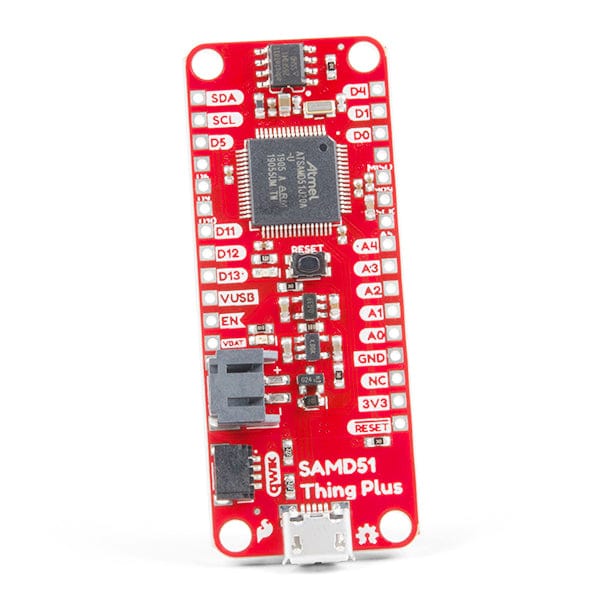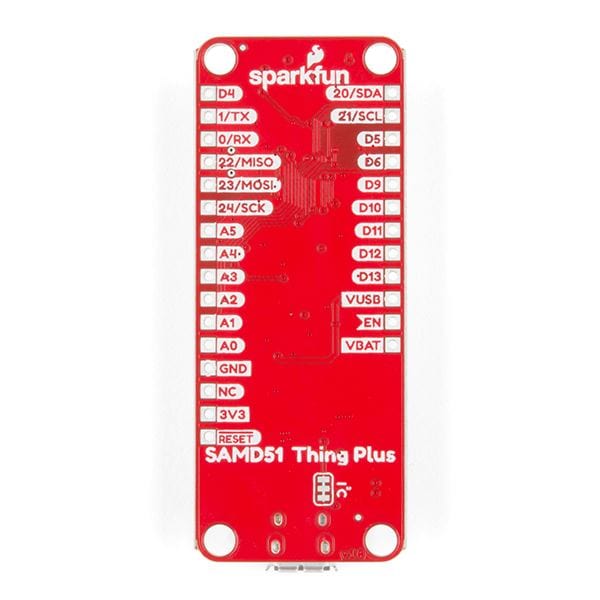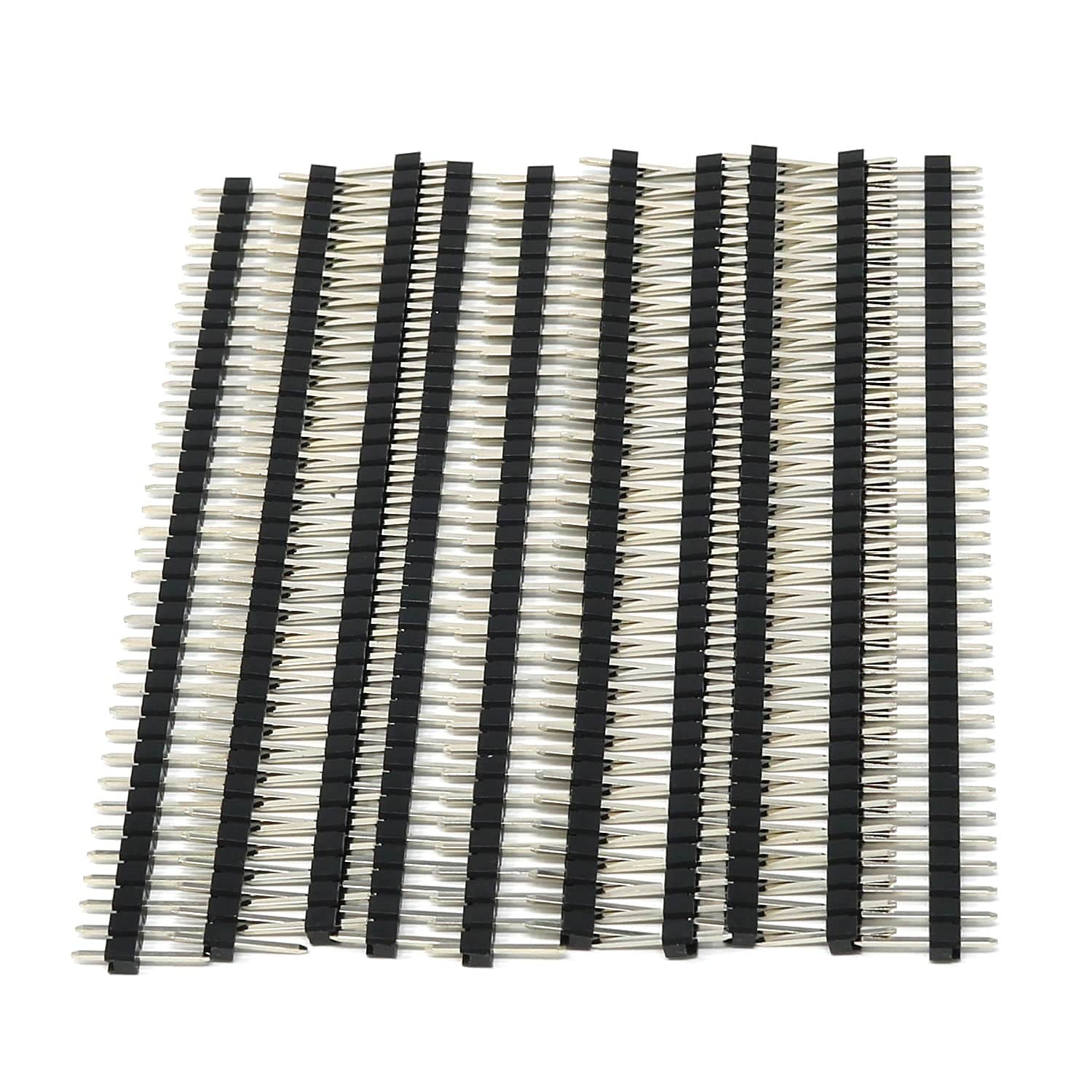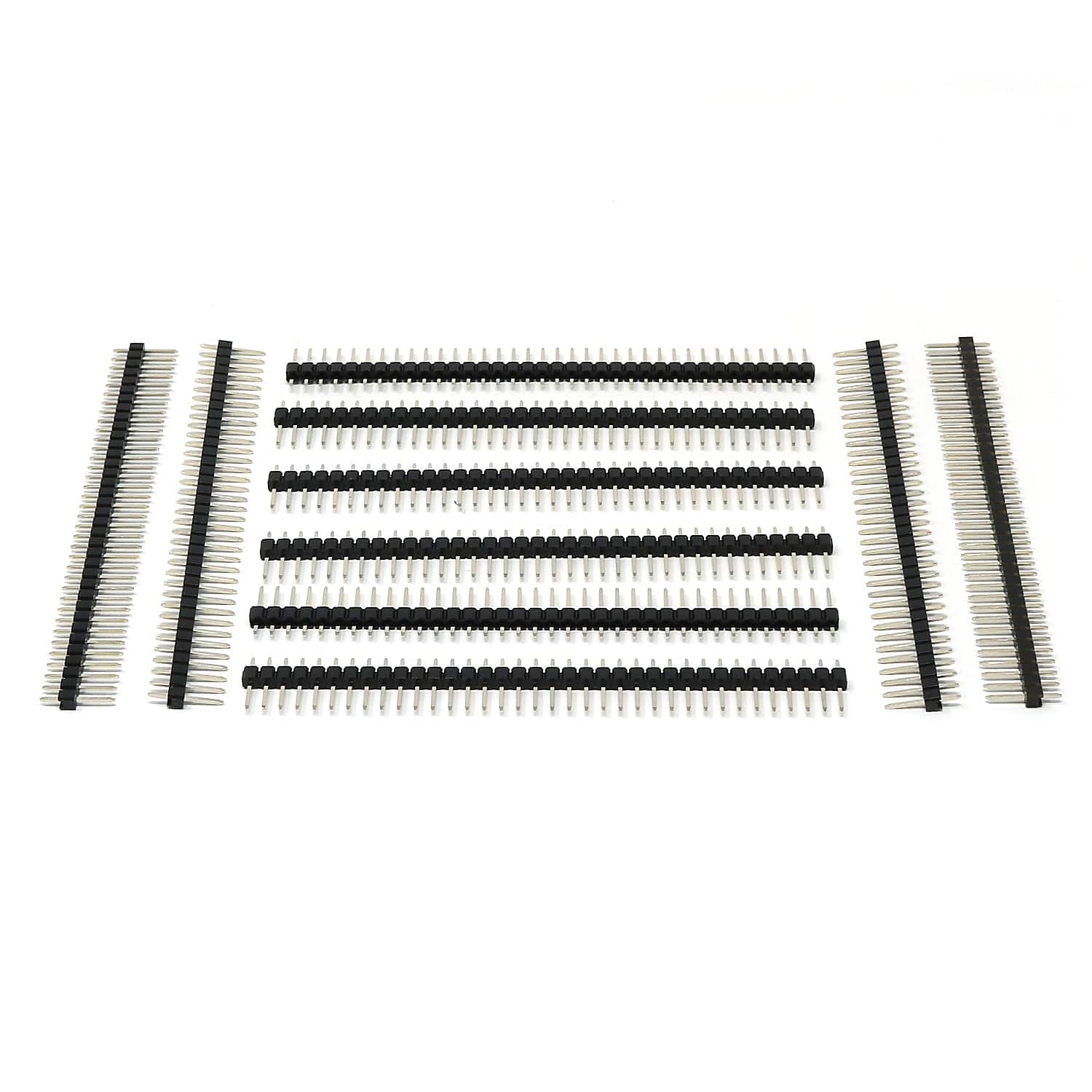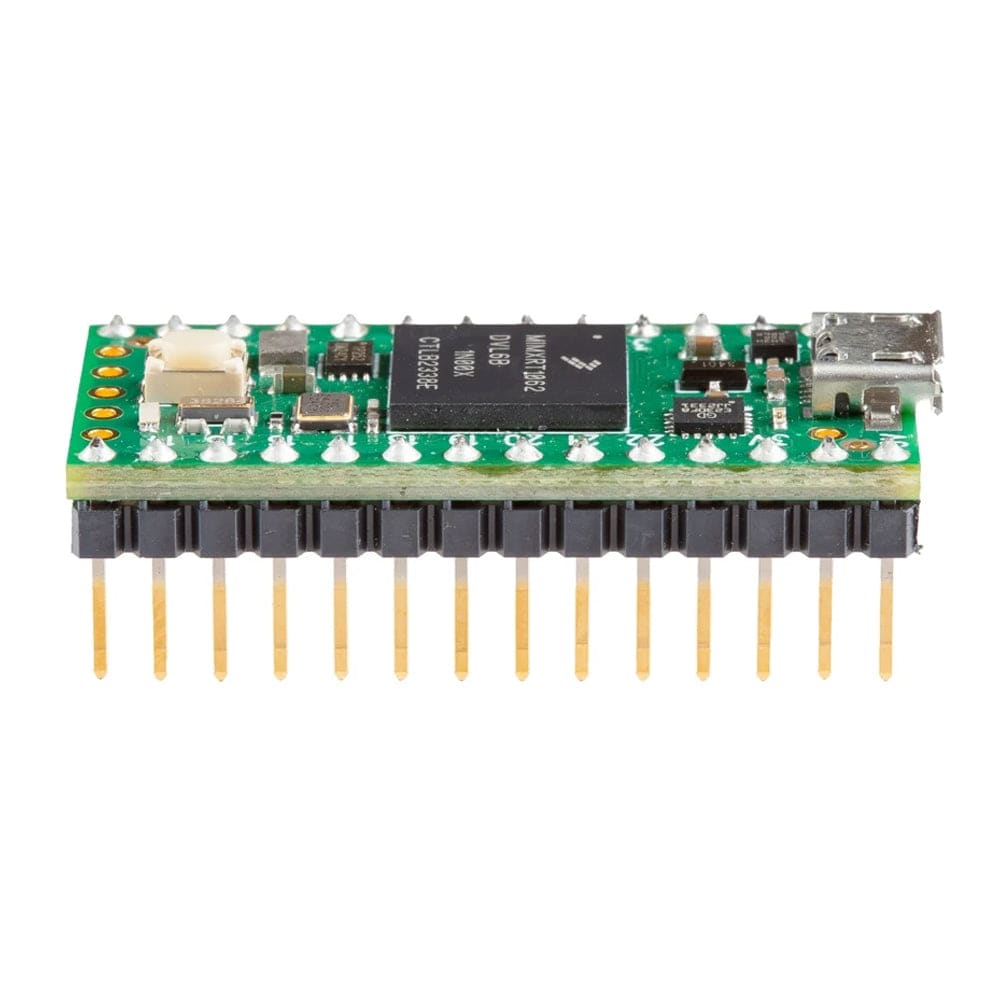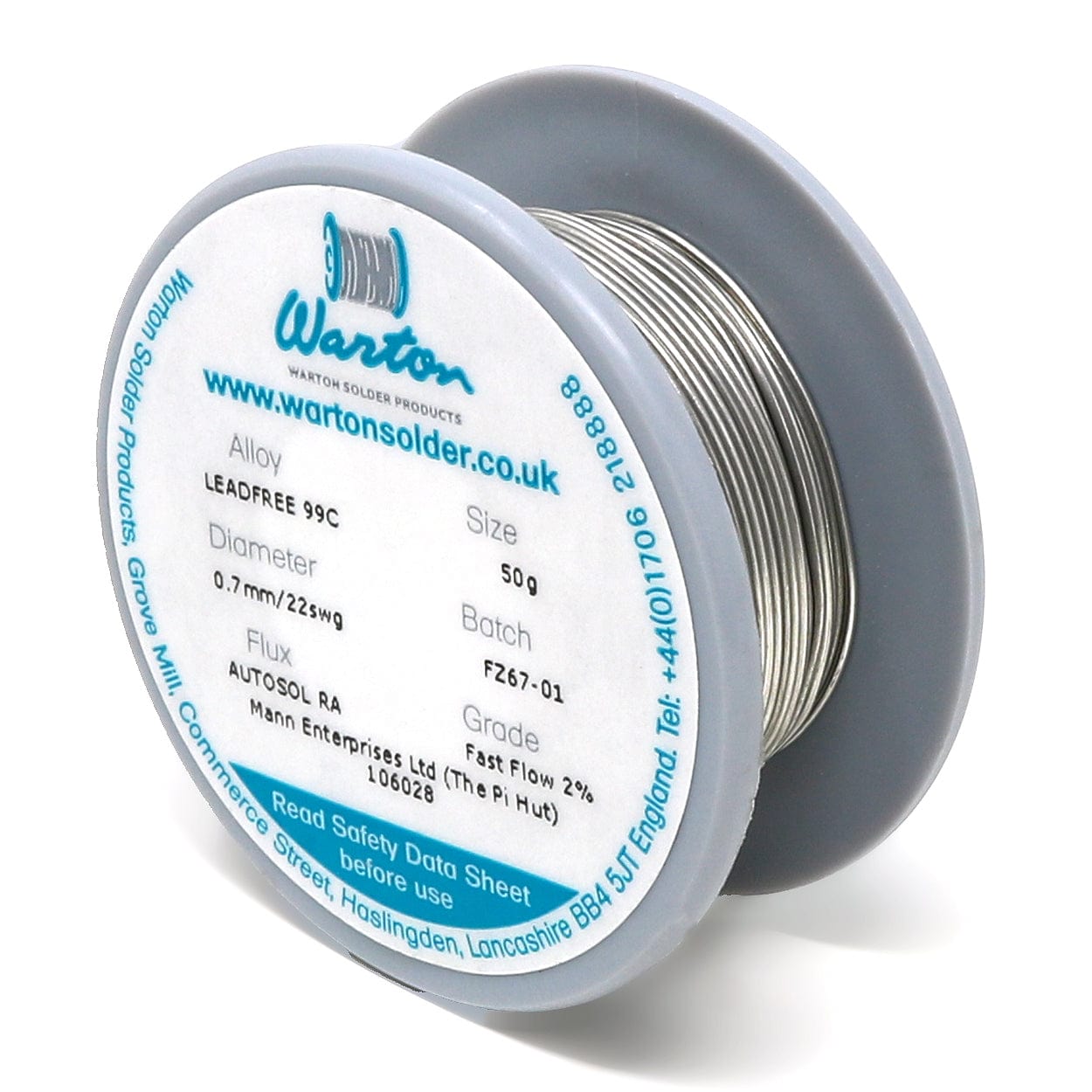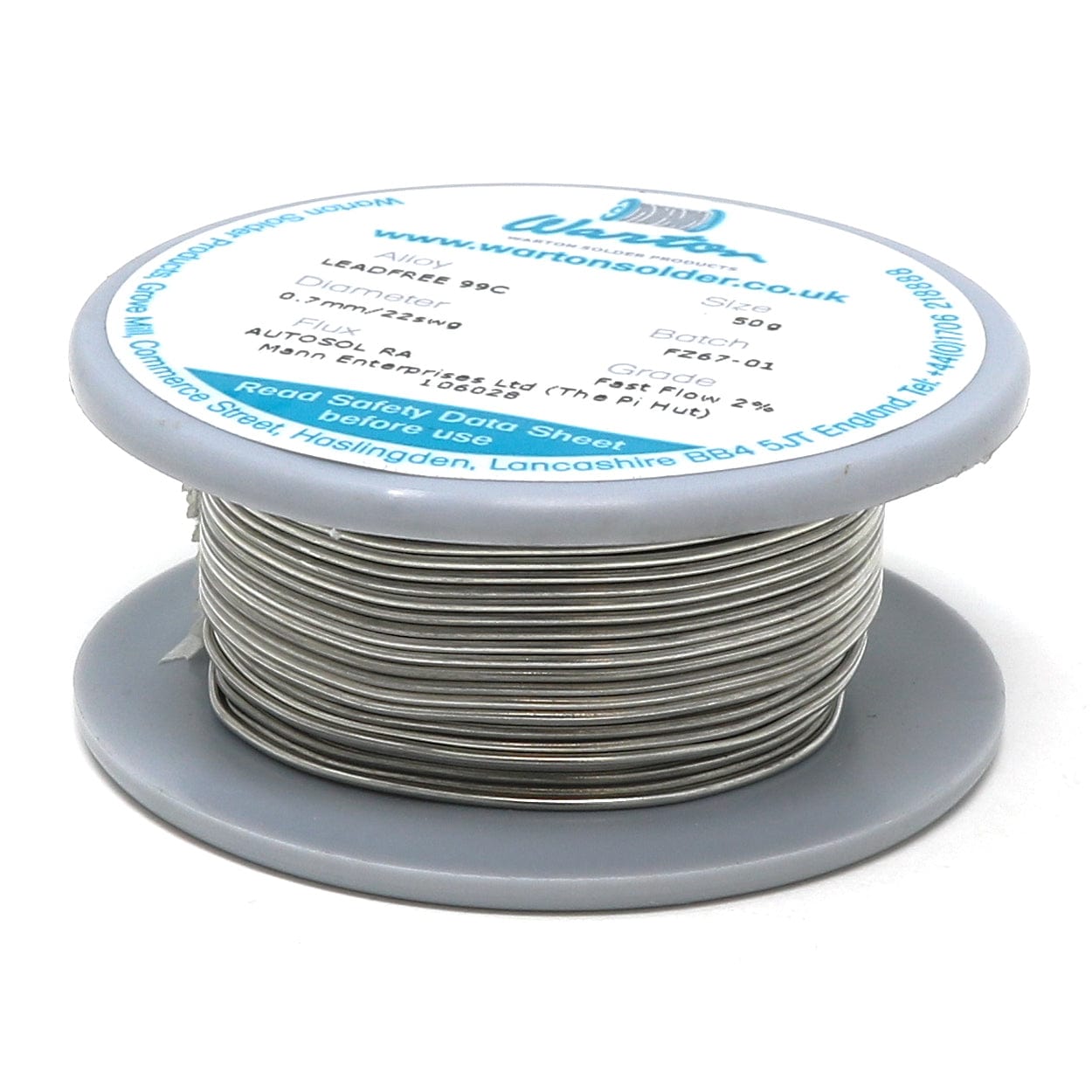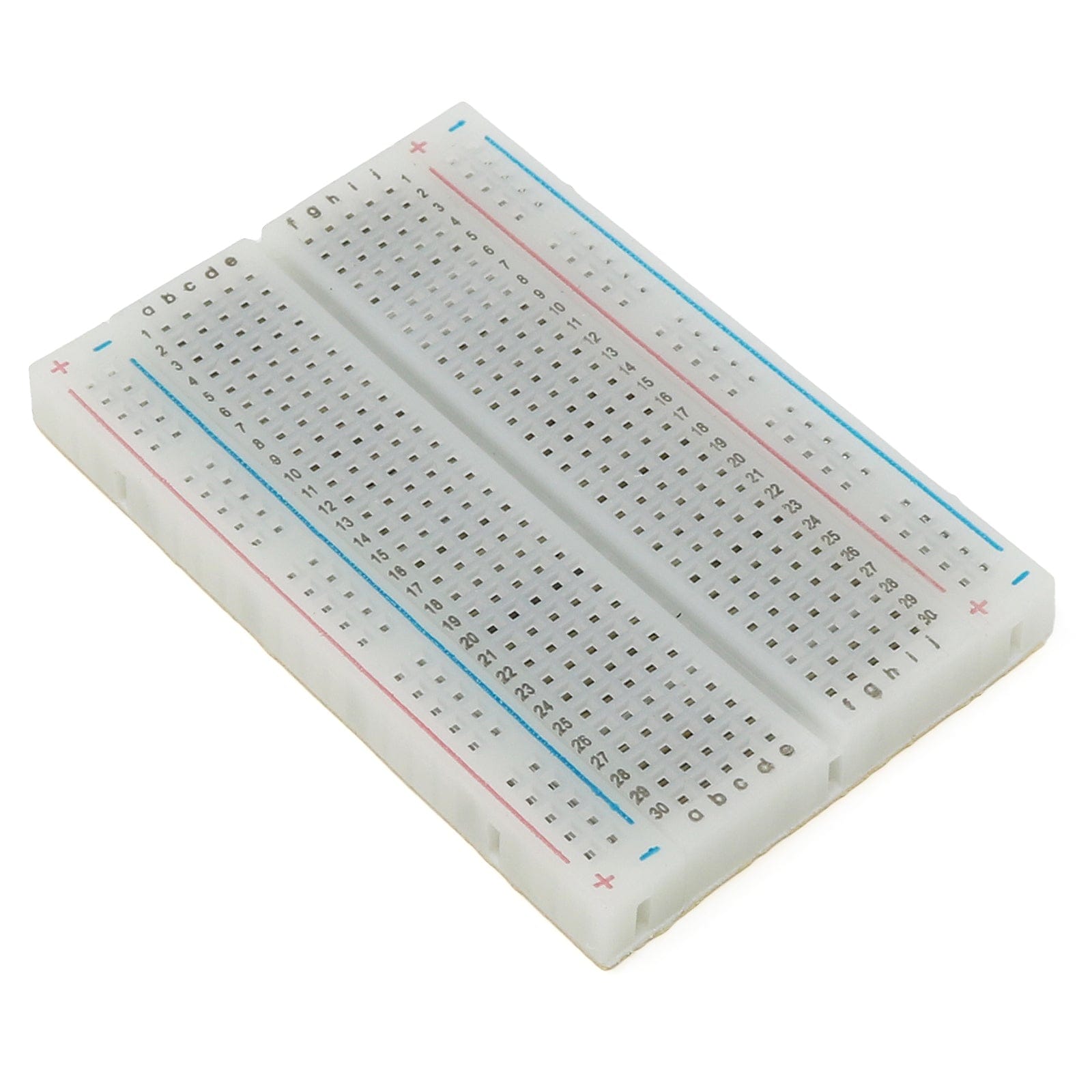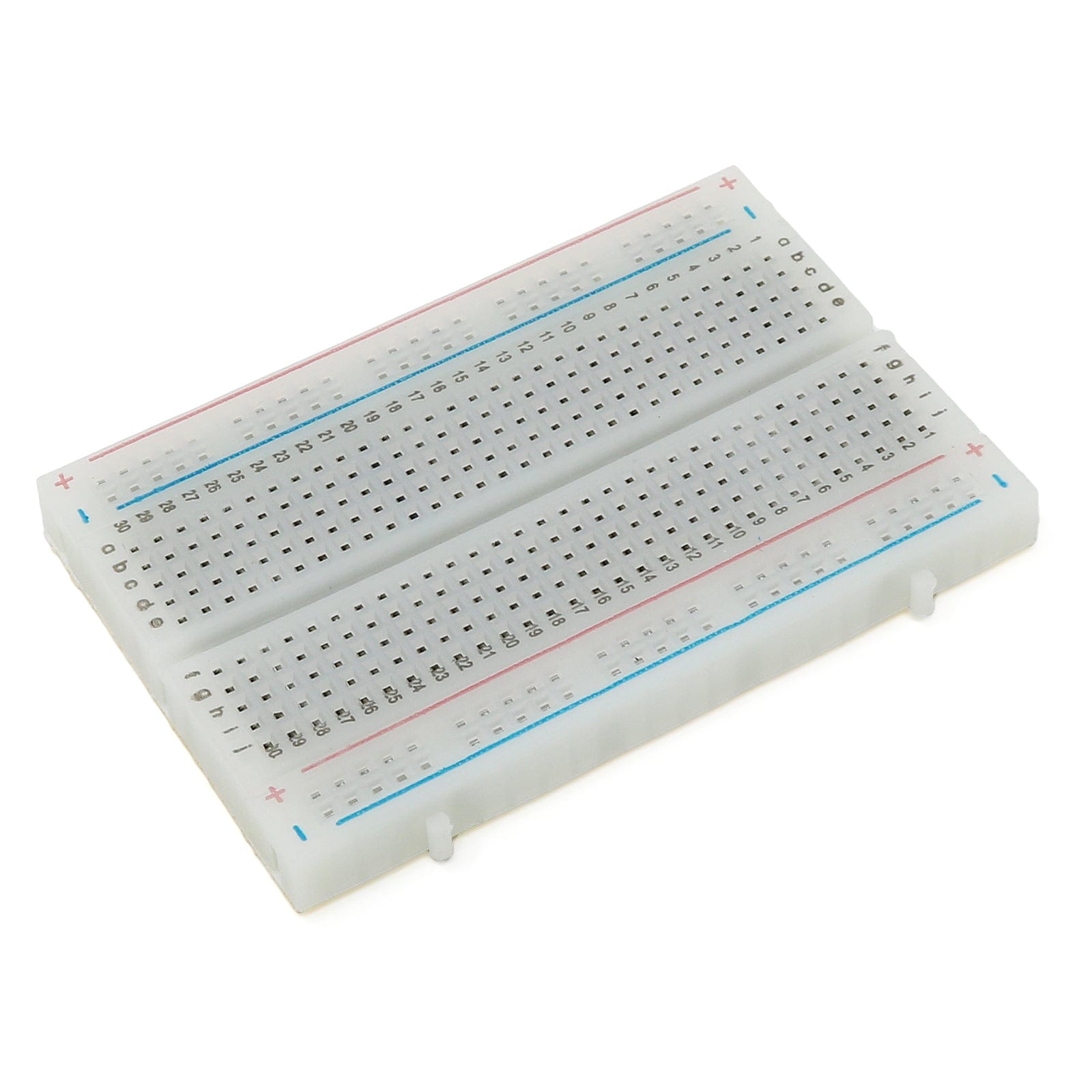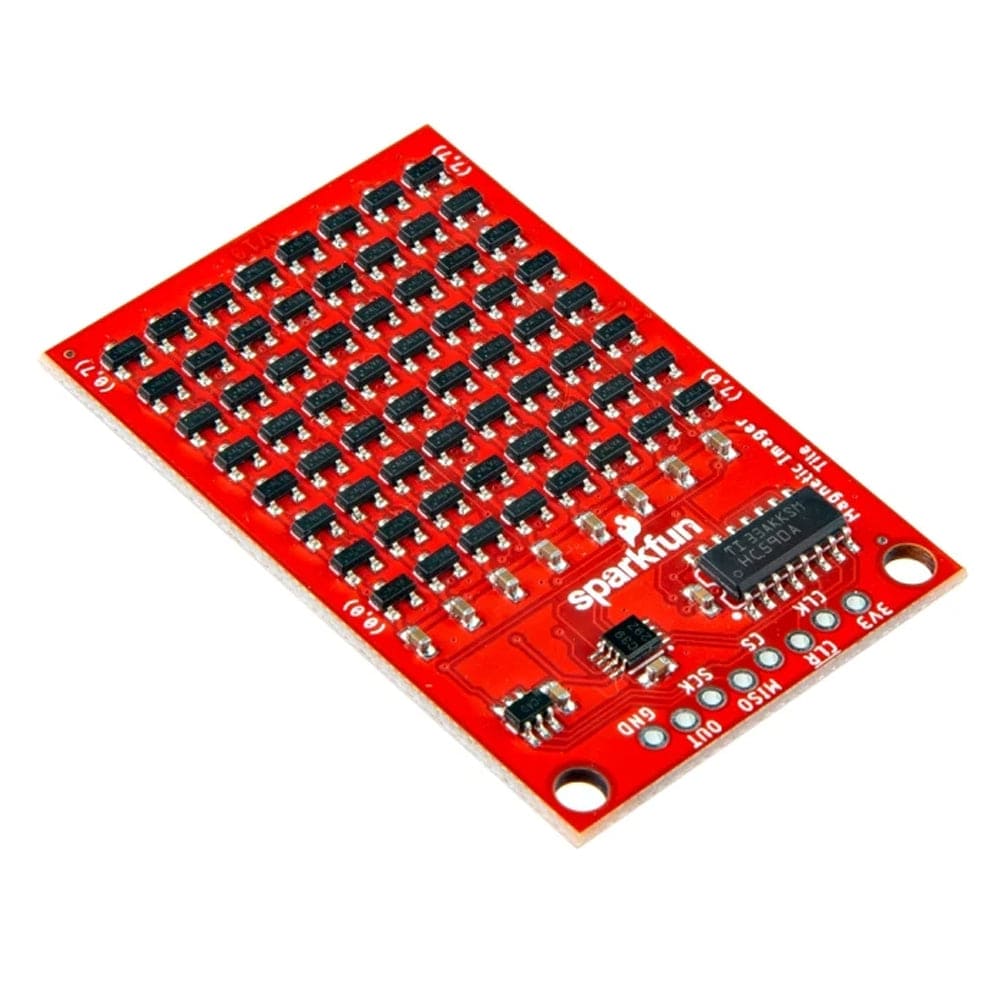
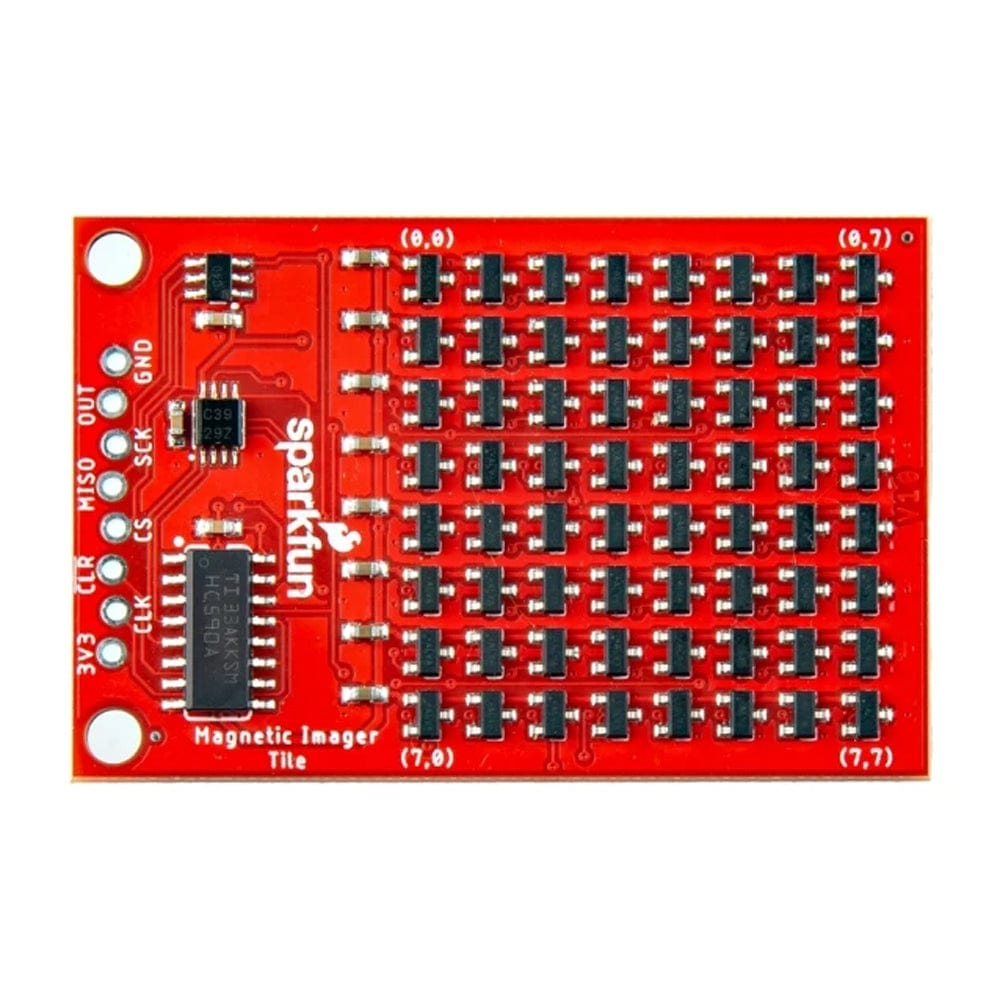
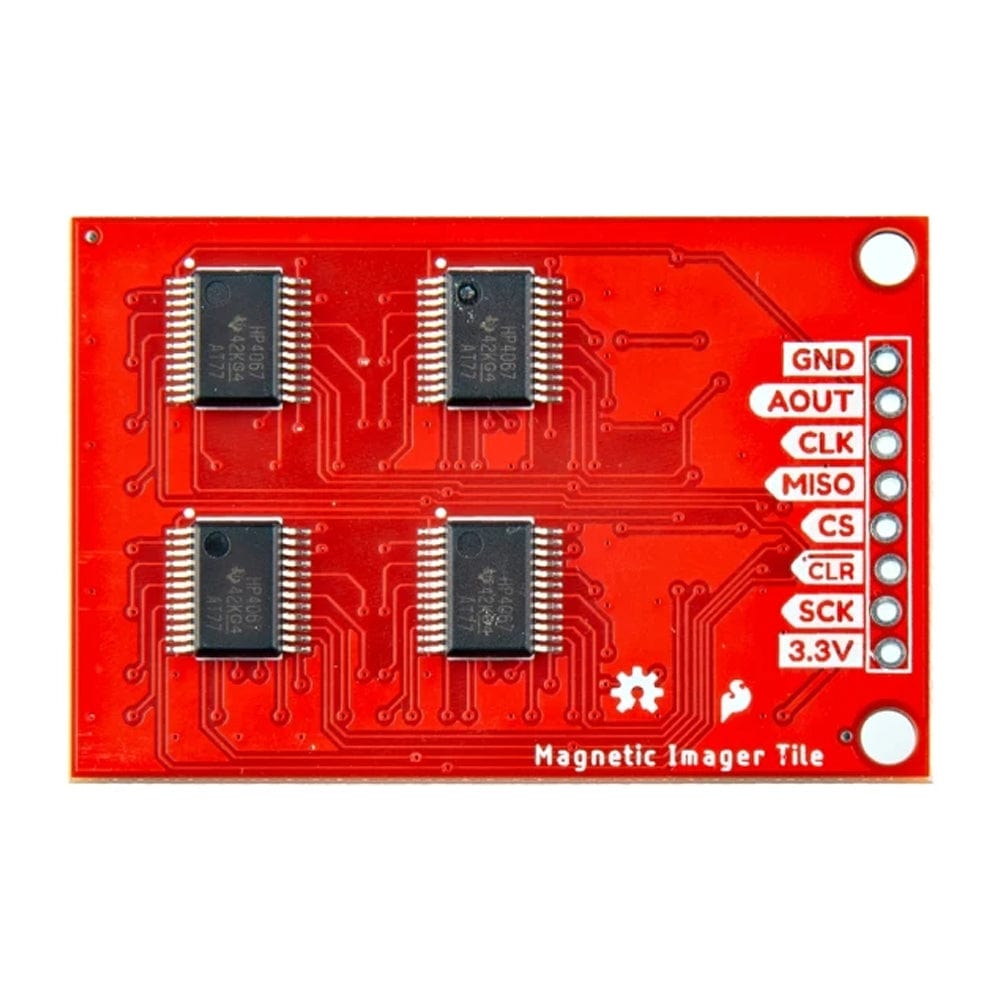
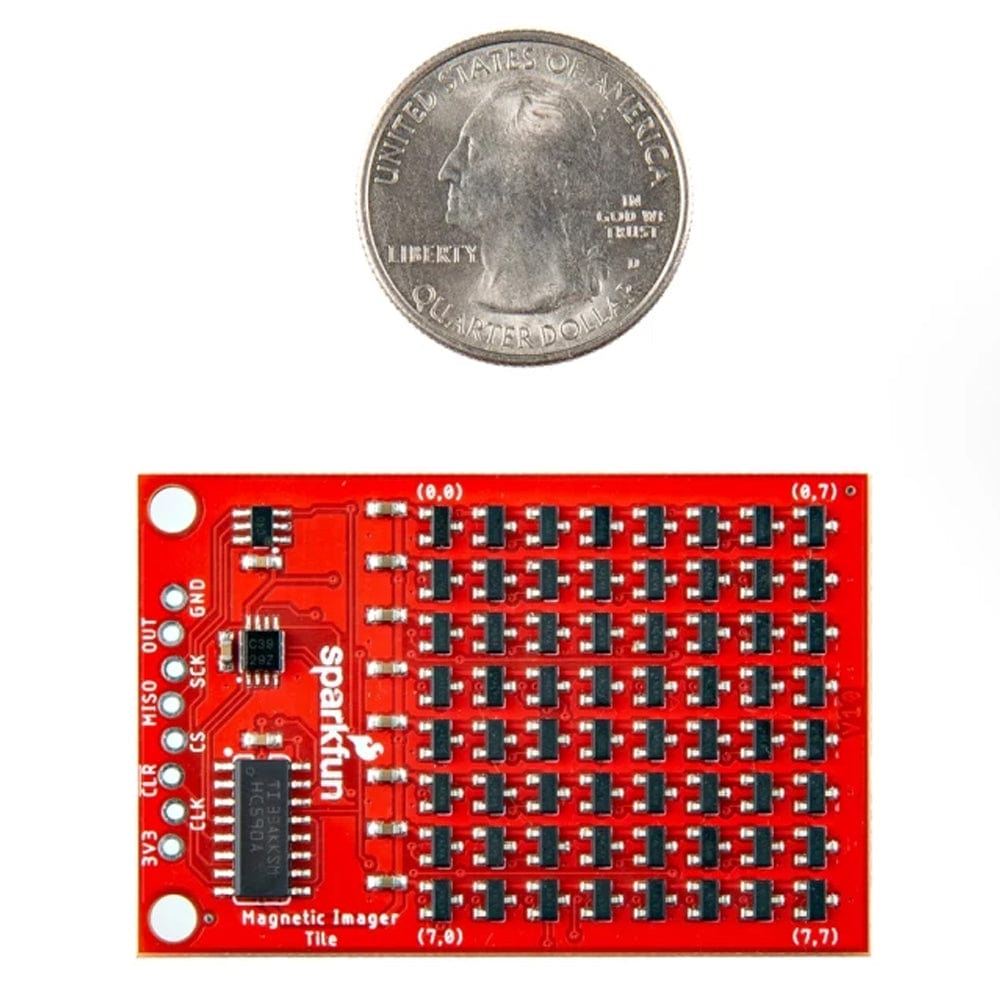
Login / Signup
Cart
Your cart is empty
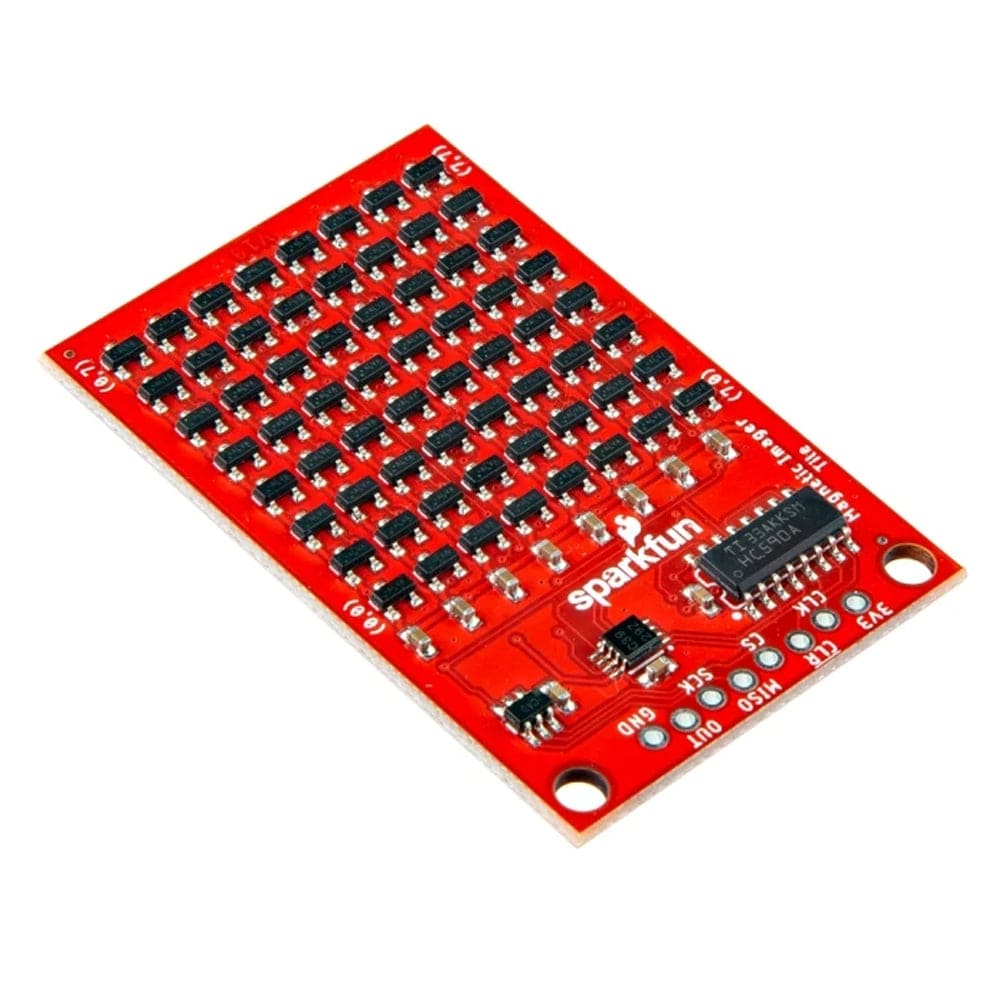
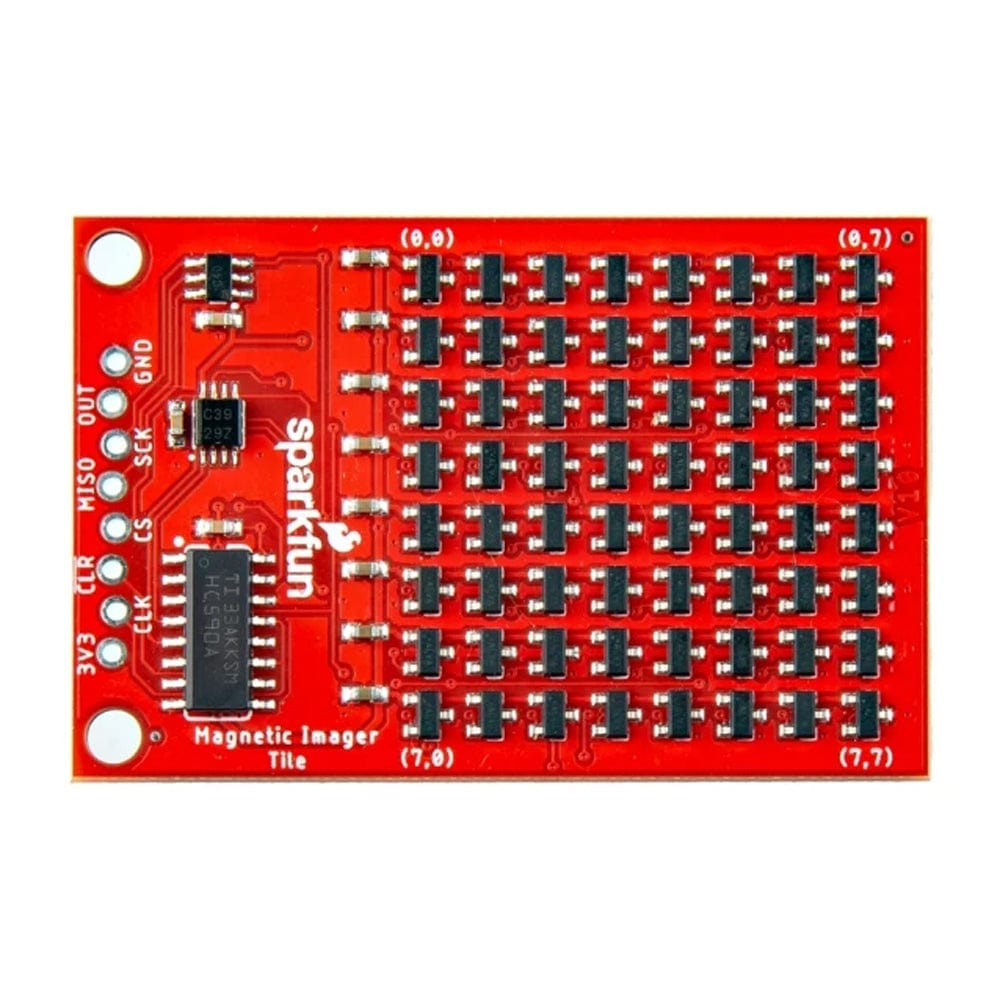
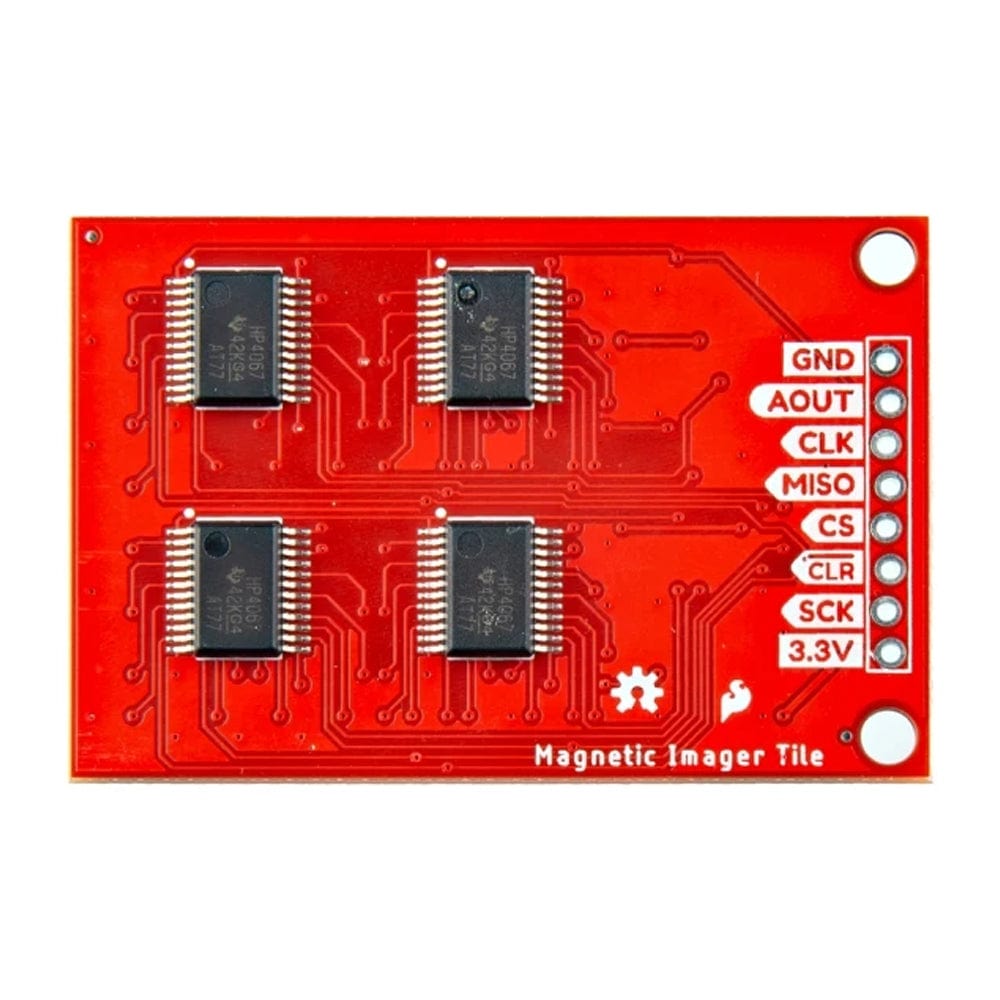
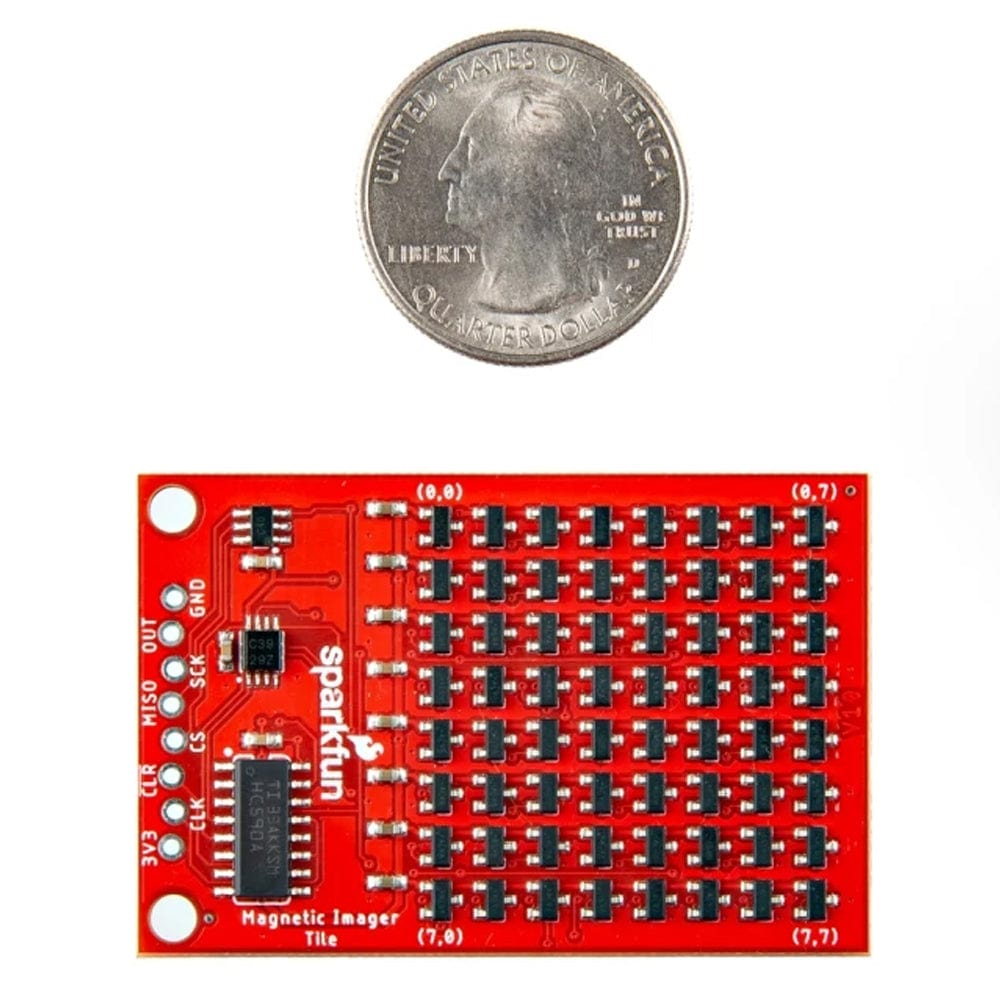
The SparkFun Magnetic Imaging Tile visualises magnetic fields in real time using a 64-sensor (8x8) DRV5053VA Hall array and 16-bit AD7680 ADC. It detects ~0.56µT changes, operates best within 1–2cm, supports up to 2,000 FPS, and runs on 3.3V or 5V.
Visualize the invisible world of magnetism in real-time! The SparkFun Magnetic Imaging Tile utilizes a dense 8x8 grid of 64 high-sensitivity Hall-effect sensors to create a live, visual representation of magnetic fields. This allows you to "see" the behaviour of magnets, the flow of current in wires, and the fields generated by electric motors.
While the tile's sensors are highly sensitive, the optimal imaging range is within 1cm to 2cm of the surface, making it perfect for detailed analysis of nearby magnetic sources.
Magnetic Sensor Array: 64x DRV5053VA Hall Effect Sensors (-90mV/mT sensitivity).
Analog-to-Digital Converter: AD7680 (16-bit, 100kSPS).
Resolution: With a 3.3V reference, the ADC has a resolution of ~50.3µV per bit. This allows the tile to detect magnetic field changes of approximately 0.56µT (5.6mG) per bit.
Software: All firmware and visualization software is open-source and available in the product repository.
The Magnetic Imaging Tile is built for speed, capturing dynamic magnetic fields with exceptional clarity. To truly appreciate the fluid, real-time imaging capabilities of this board, we highly recommend watching the demo video.
Frame rates are highly dependent on the host controller's processing power. Our open-source software demonstrates a wide performance range:
With a standard 32-bit microcontroller (like the RedBoard Turbo - SAMD21), you can achieve over 76 FPS via serial and up to 200 FPS with buffering.
Using a high-performance microcontroller (like the ChipKIT™ Max32), it's possible to reach approximately 2,000 FPS.
The onboard 100kSPS ADC has a theoretical maximum of 1,562 FPS (100,000 samples per second / 64 pixels). For the ultimate in speed, the raw analog signal is exposed. By connecting to a microcontroller with a faster internal ADC, you can bypass the onboard converter and approach the sensor's theoretical limit of ~20,000 FPS.
This board is a collaboration with Peter Jansen of the "Open Source Science Tricorder Project." You can read more about his groundbreaking work on Hackaday.
Power Note: The board is labeled for 3.3V operation, but it can also be safely powered with 5V. Using a 5V supply increases the analog voltage range, which enhances the overall resolution and performance of the ADC.





